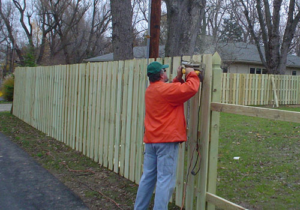Pests cause property damage and pose health threats like allergies and asthma attacks. They also can spread bacteria, such as hantavirus, leptospirosis, and salmonella.
Learn what attracts pests and what options are available to prevent them from entering your home. Clean up debris and clutter that provides hiding places and food sources for pests. Contact Pest Control Louisville KY now!

Pests damage plants, crops, and property. They also can contaminate food, spread disease, and cause asthma, allergies, and other health problems for humans and pets. They can even destroy or degrade buildings and equipment. Pest damage can be costly to repair or replace. Preventing pests is the best way to save money and to avoid damage.
Keeping food in airtight containers and away from the edges of counters will prevent ants and other pests from accessing it. It is important to clean kitchen areas and keep trash cans tightly closed. It is a good idea to have garbage pickup regularly.
A tidy yard will help deter pests from entering homes and business. Keep wood piles far from the house, clean gutters, and trim bushes and grass.
Pests thrive in unclean, overgrown conditions. They hide under weeds, under leaves and in overgrown gardens. Cleaning up weeds and overgrown vegetation, as well as keeping trash cans closed and putting out garbage regularly, will keep pests from finding hiding places.
Many pests are able to breed in a relatively short time. This allows them to quickly become a problem if they are allowed to build up to threshold levels. Threshold levels are usually based on how often or how many pests are being seen. For example, a few wasps in the backyard may not warrant action but if they are showing up in the kitchen, it is time to call a pest control professional.
A company that focuses on prevention can keep their customers’ facilities and employees pest free. The trained staff can identify the conditions that will favor pests and recommend solutions for keeping them at bay.
Prevention is an essential part of IPM, as it provides the basis for a proactive approach to pest control that keeps costs down and minimizes the negative impact on people and the environment. This is why a company that focuses on prevention will use only the most environmentally responsible methods for controlling pests, and will not “treat” every pest site they see, no matter how small the numbers are.
Suppression
Biological pest control methods use living organisms to reduce pest infestations by injuring, parasitizing, or consuming them. Some of these are natural enemies (parasites, predators, pathogens) or introduced “enemies” (sterile males, pheromones). Using biological controls helps to limit the need for chemicals and is often more effective than simply using chemical solutions. However, biological control may take longer because of a time lag between a pest population increase and the corresponding effect on its enemies.
Mechanical and physical control techniques either kill the pest directly or make the environment unsuitable for it, such as traps for rodents or barriers such as screens to keep birds and insects away. These are usually less expensive than chemical controls, and some are more easily incorporated into integrated pest management programs. However, they can also be more dangerous, and they may require you to handle or dispose of dead pests. Always read product labels carefully to minimize potential hazards, and consider limiting the use of these controls to experienced pest controllers who are trained in their use and have adequate personal protective equipment (PPE).
Chemical pest control uses products that contain synthetic or natural chemicals to destroy pests. These are typically easier to find and use than biological controls, and they can be highly effective, but they can also pose health and environmental hazards when used incorrectly or at the wrong times. These include repellents, such as liquid or spray deterrents; insecticides, which kill pests; and fungicides, which control diseases in plants and animals.
Clutter provides places for pests to breed and hide, and it makes them harder to find and remove. Clean spaces regularly and eliminate clutter where possible. Seal cracks and crevices to prevent pest entry. Use sweeps and astragals to fill gaps under doors, and caulk around walls and ceiling penetrations to prevent pest entrance. Use door and window seals and insect screen to prevent draughts, which can attract pests.
Indoor environments can become breeding and resting places for a wide variety of pests, including bacteria, fungus, insects, rodents, mites, and nematodes. These can affect indoor air quality, cause allergic reactions and asthma attacks in humans, and transmit diseases to people and animals.
Eradication
For certain pests, especially disease-causing ones like rodents and cockroaches, eradication is the goal. Eradication is more difficult than prevention and suppression, but it can be accomplished with the right strategies.
Eradication usually happens at the community, national, or global level and depends on a number of factors. The most important is a reduction in the reproductive rate, which must be achieved at all levels of control—in vectors (including mosquitoes and ticks), intermediary hosts, and humans. Eradication requires a significant investment of resources and the balancing of private versus social net benefits. For example, eradication of guinea worm disease (dracunculiasis) will require water supply systems that are free of the parasite and its vector copepod, as well as vaccination to reduce human exposure. Civil strife and political problems may thwart eradication efforts, as was the case with yellow fever.
Chemical controls are often the best choice for eradicating pests, but they can be dangerous to people and pets. In addition, many chemicals aren’t effective against all stages of a pest’s life cycle. For example, conventional flea treatments kill adult fleas but don’t address eggs, larvae, and pupae.
Nonchemical pest control methods can be equally as effective and much safer for humans and pets. Natural repellants can help keep ants and other pests away from your home, while baits and traps are good for controlling rodents and cockroaches. Other low-risk pest control options include diatomaceous earth and pheromone traps.
Keeping pests at bay is essential to maintain a healthy environment. Pests can damage your property, cause illnesses, and make your home uncomfortable. You can avoid costly repairs and unnecessary health problems by implementing preventative measures.
Whether to call in the professionals or roll up your sleeves depends on the nature of the pests. For instance, silverfish might be a nuisance but don’t pose serious risks. On the other hand, rat and cockroach infestations are dangerous and expensive to control. IPM recommends using nontoxic methods to prevent them, such as neem oil or netting. If you must use chemicals, IPM experts recommend consulting your local cooperative extension service for recommendations suitable to your area.
Eradication
Pests can cause damage to crops or other property, spread disease, or create an environment of fear and distress. Pest control strategies aim to prevent or eliminate pest problems by using various methods, including physical, biological and chemical controls.
The most common type of pest control involves the use of chemicals to kill or repel unwanted organisms. Pesticides include insecticides, herbicides, and fungicides. They are generally used to protect crops from pests, but may also be used to control diseases, weeds and other nuisance plants. Pesticides are often the fastest and most effective way to control a pest infestation, but they can be harmful to humans and other animals.
Aside from pesticides, there are other ways to manage a pest problem, such as mechanical and cultural controls. Mechanical controls include mowing and mulching to prevent weeds from growing, picking ripe fruit before pests attack, and pruning to remove fruit or vegetable overhangs. Cultural controls include modifying habitats to make them unattractive to pests, such as clearing brush and removing weeds.
Eradication is a rare goal in outdoor pest situations, since pests are usually managed through prevention and suppression. It is occasionally attempted, however, when an exotic pest invades an area and is not yet under control (Mediterranean fruit fly and gypsy moth control programs are examples). Eradication is easier to achieve in enclosed areas such as homes and offices.
Some pesticide failures are due to resistance by the pest. Others are the result of improper application or timing. In these cases, it is important to review the situation and try to determine why the pesticide failed.
Keep the Yard Clean
The best way to reduce pest problems is to prevent them from entering the home in the first place. Make sure trash cans are tightly sealed and garbage is removed regularly. Keep the garden free of weeds and tall grass, which provide places for pests to hide. In addition, keep the house clean by removing food sources from the kitchen and sealing any cracks or holes that pests could enter through.
Essential oils, such as mint, lavender, and citronella, can be used to repel pests and keep them away from the home. They can be applied to the skin or sprayed around the perimeter of the house. Another natural option is to release parasitic nematodes into the soil. These microscopic worms feed on the roots of pests, such as fleas, grubs and ants. They can be purchased from most greenhouses and some gardening centers.




